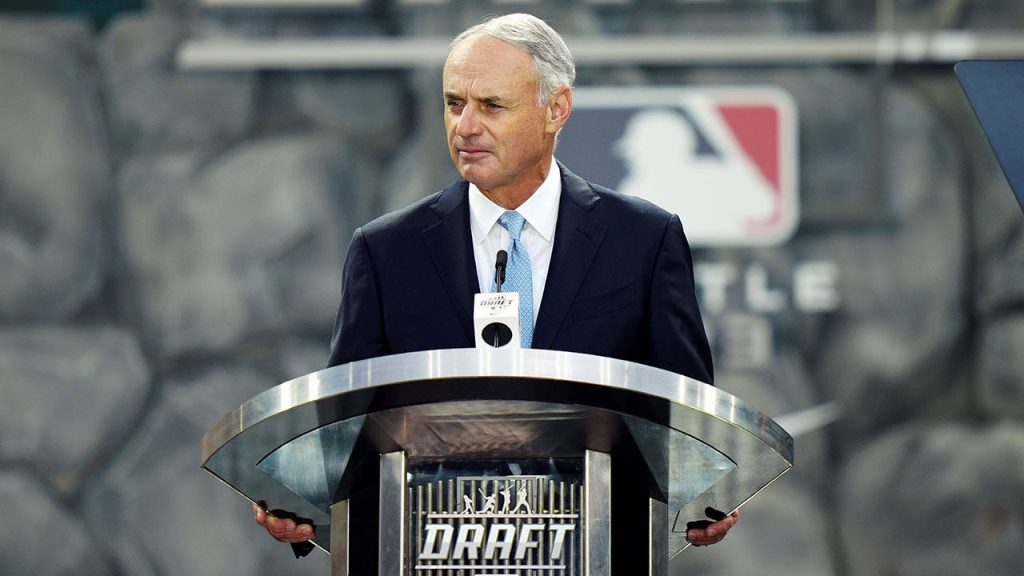Major League Baseball (MLB) is proposing a new rule that has drawn significant criticism from various figures within the sport. Commissioner Rob Manfred introduced the concept of a “golden at-bat,” which would allow each team to send any player they choose to the plate for one at-bat during a game. The idea has sparked outrage from several prominent players and commentators, reflecting the traditionalist sentiments prevalent in baseball culture. Roger Clemens, a seven-time Cy Young Award winner, expressed disbelief over the proposal on social media, suggesting that such a rule seemed implausible. Similarly, former player Chipper Jones criticized the concept, humorously proposing an equivalent rule for defensive teams. The skepticism surrounding this new rule symbolizes broader concerns over altering the integrity of the game that many fans and former players hold dear.
Reactions to the proposed change have illuminated the complexities of evolving baseball traditions. While many voice discontent, some within the sport understand the necessity for innovation amid declining interest among younger audiences. New York Yankees broadcaster Michael Kay acknowledged that although he is not in favor of the rule, he appreciates Manfred’s willingness to think creatively about baseball’s future. Kay underscored a pressing need to appeal to younger fans, who have become increasingly disengaged from America’s pastime. His comments suggest a recognition that while baseball does have cherished traditions, the possibility of losing younger viewers necessitates a reevaluation of how the game is played and presented.
Despite the pushback against the “golden at-bat,” there have been signs of positive progress within the game, indicating that some rule changes may already be having the desired effect. The average length of a nine-inning game in the 2024 regular season dropped to two hours and 36 minutes, marking the shortest duration since 1984. Moreover, there has been a noteworthy increase in the number of stolen bases—3,617 in the current season, the highest figure since 1915. These statistics reflect successful efforts to enhance the pace of play and invigorate offensive strategies, suggesting that reform can resonate positively with fans. This intensified pace may be one reason MLB experienced its highest attendance levels since 2017, even amid soaring ticket prices. For the first time in over a decade, attendance increased for two consecutive years, showcasing a potential turnaround in public engagement with the sport.
The juxtaposition of the proposed “golden at-bat” rule and the recent positive shifts in MLB can be viewed as emblematic of baseball’s ongoing struggle between tradition and innovation. Baseball purists often view changes to the game’s structure as unnecessary or even detrimental, prompting fears that such alterations could dilute the sport’s authenticity. However, as younger generations have begun gravitating towards faster-paced sports and distractions, the question arises whether the sanctity of the game can coexist with the imperative to adapt. The evolution of MLB is at a crossroads, where maintaining historical values must be balanced with the desire to attract and retain fans in an ever-changing landscape.
The conversations around MLB’s proposed changes hint at a larger discourse regarding the future of sports in general. Tradition holds significant value in athletics, especially in sports as storied and historic as baseball; however, these traditions can hinder progress if they inhibit adaptation to modern audience preferences. Reflecting the broader societal discourse about change and continuity, MLB’s potential rule modifications reveal how sports organizations strive to evolve their games while respecting their roots. Whether such changes will be successful largely depends on how they are perceived by fans and players alike, highlighting the importance of cultivating open dialogue within the sport.
In summary, the introduction of the “golden at-bat” proposal reflects the contentious climate of Major League Baseball as it aims to balance innovation with the cherished traditions of the game. Criticism from legendary players and broadcasters illustrates the deep-rooted resistance to altering established norms in baseball. While there have been positive developments, such as shorter game lengths and increased attendance, the challenge remains for MLB to engage a younger audience while preserving the essence of what makes baseball appealing to its long-standing fan base. As the league navigates these changes, the outcome will not only impact the immediate future of the game but could also define its trajectory for generations to come.


